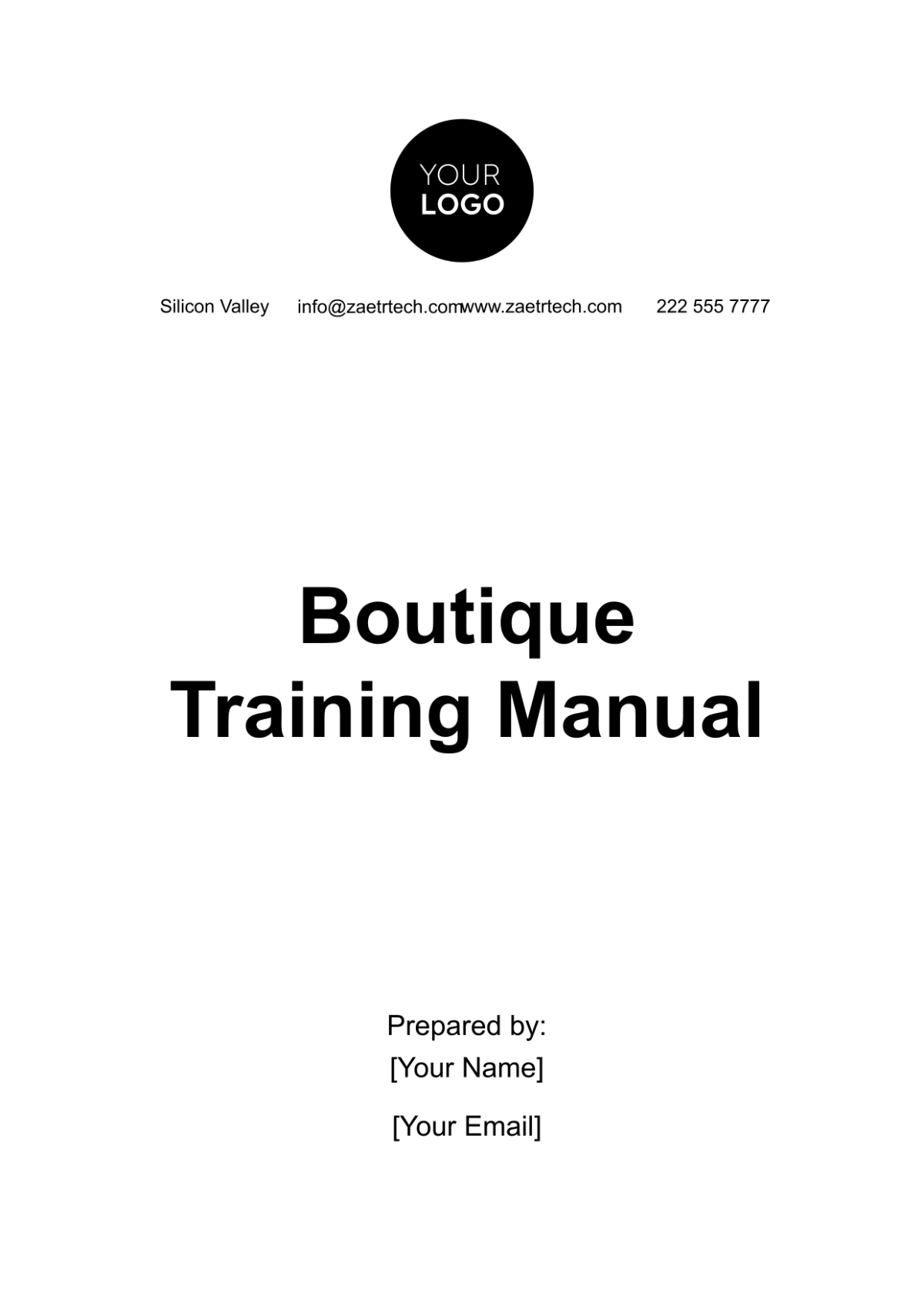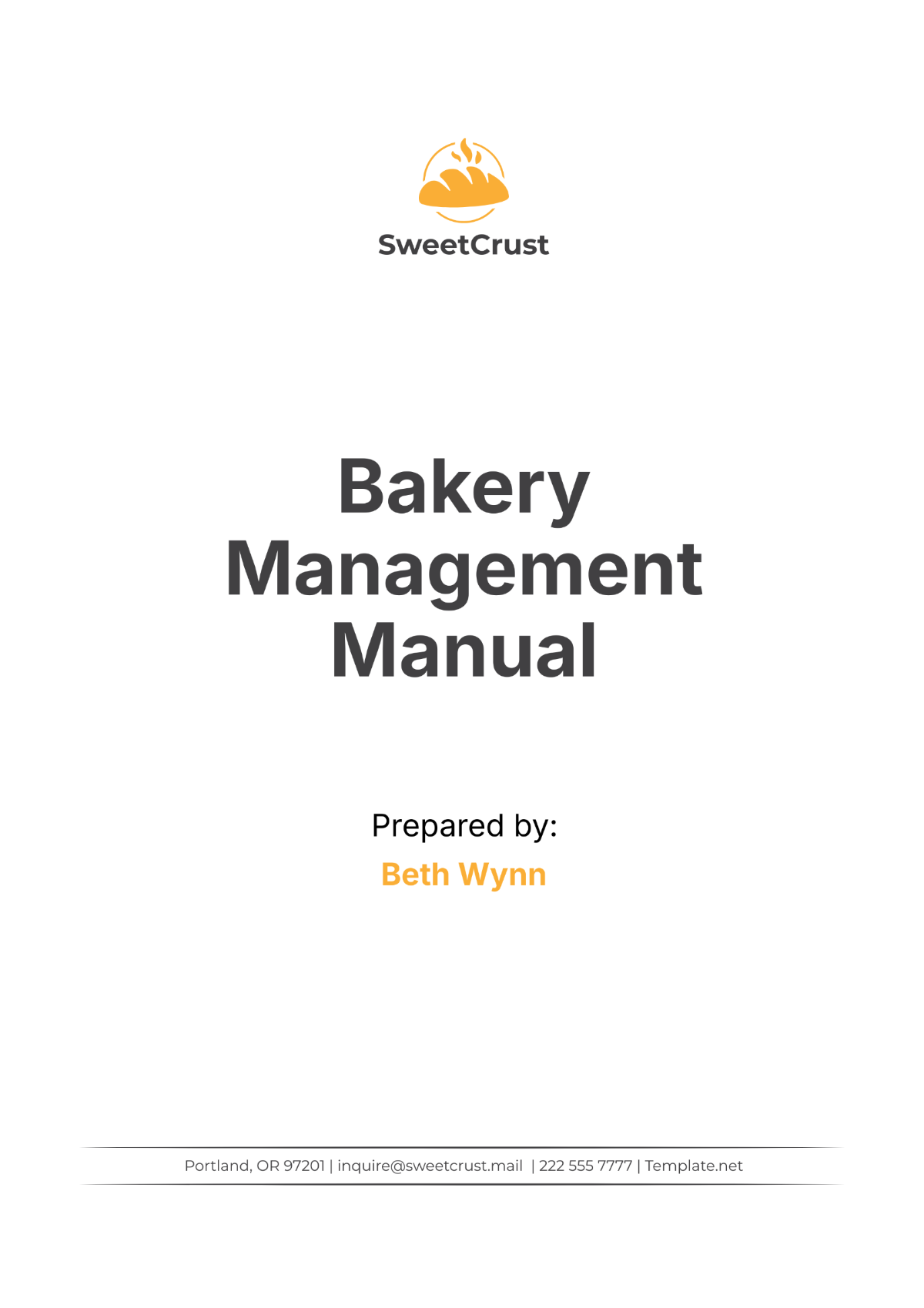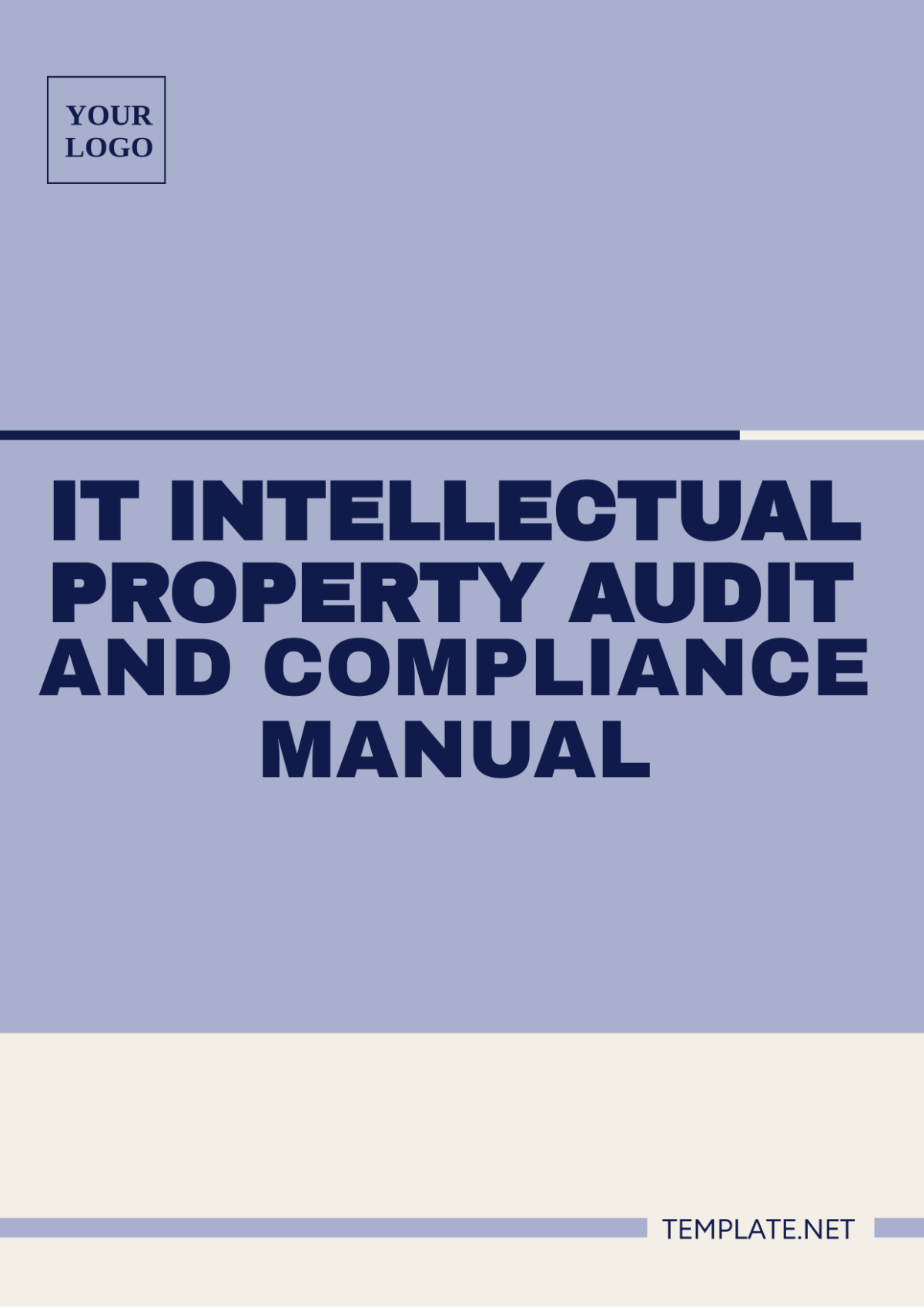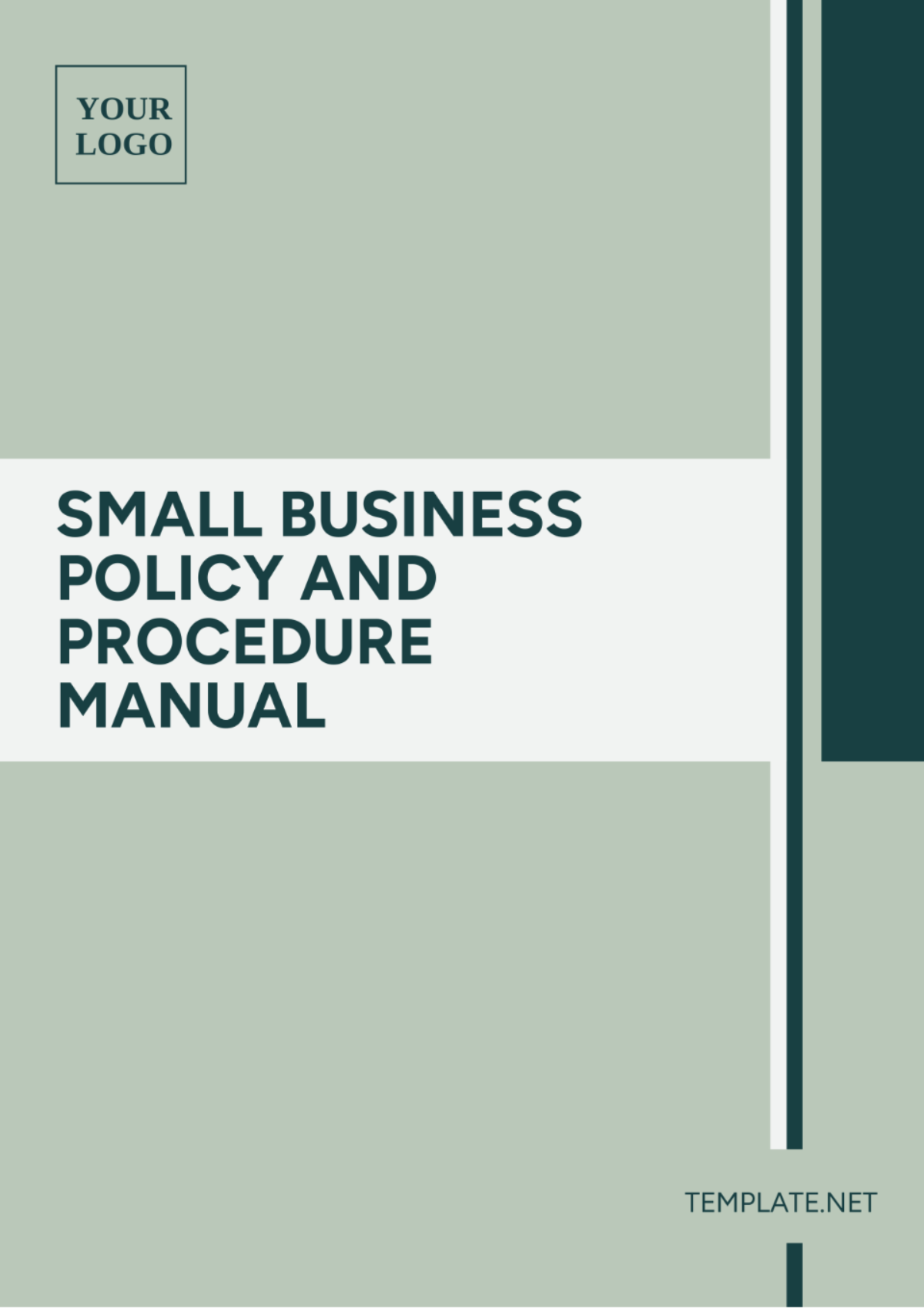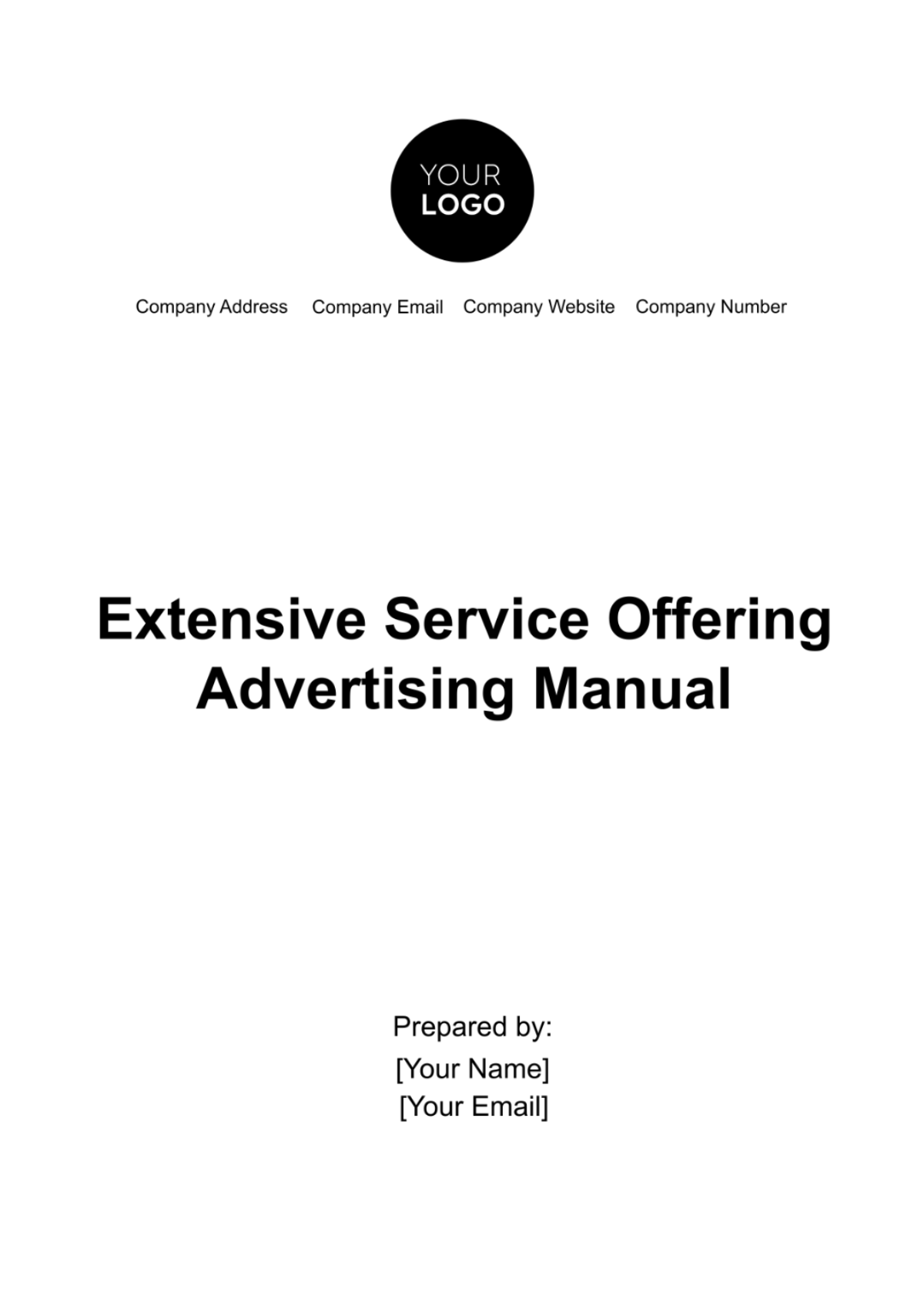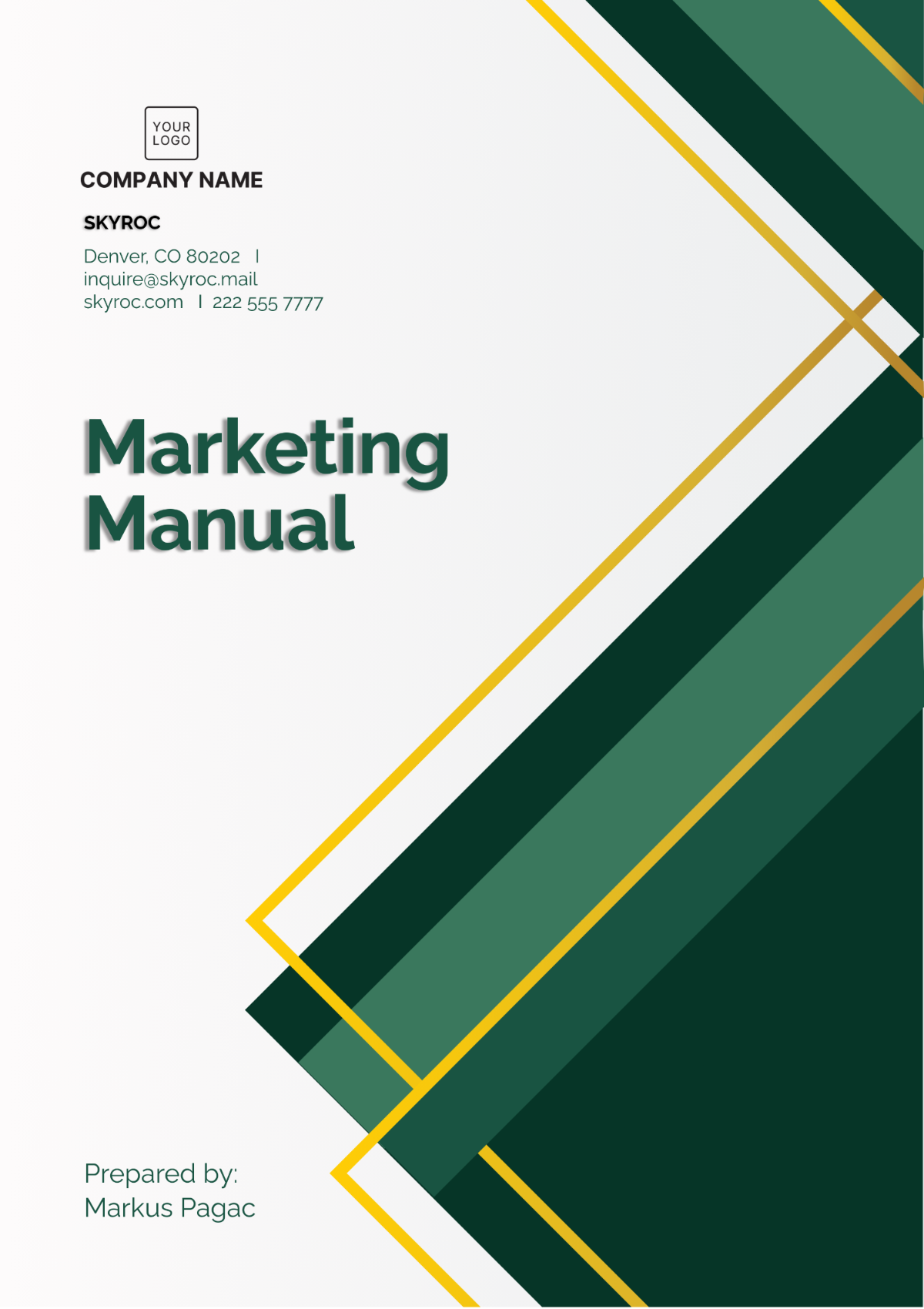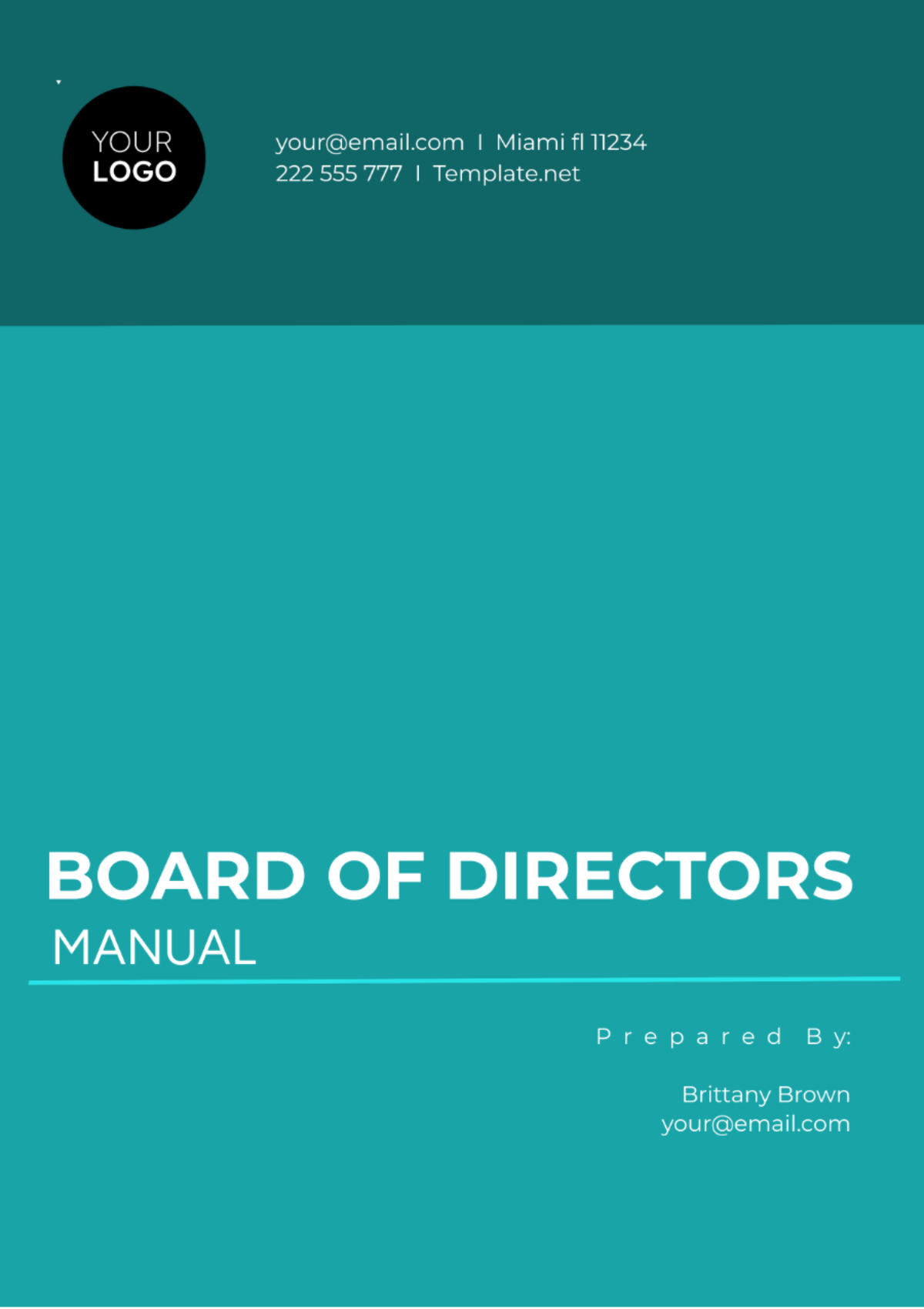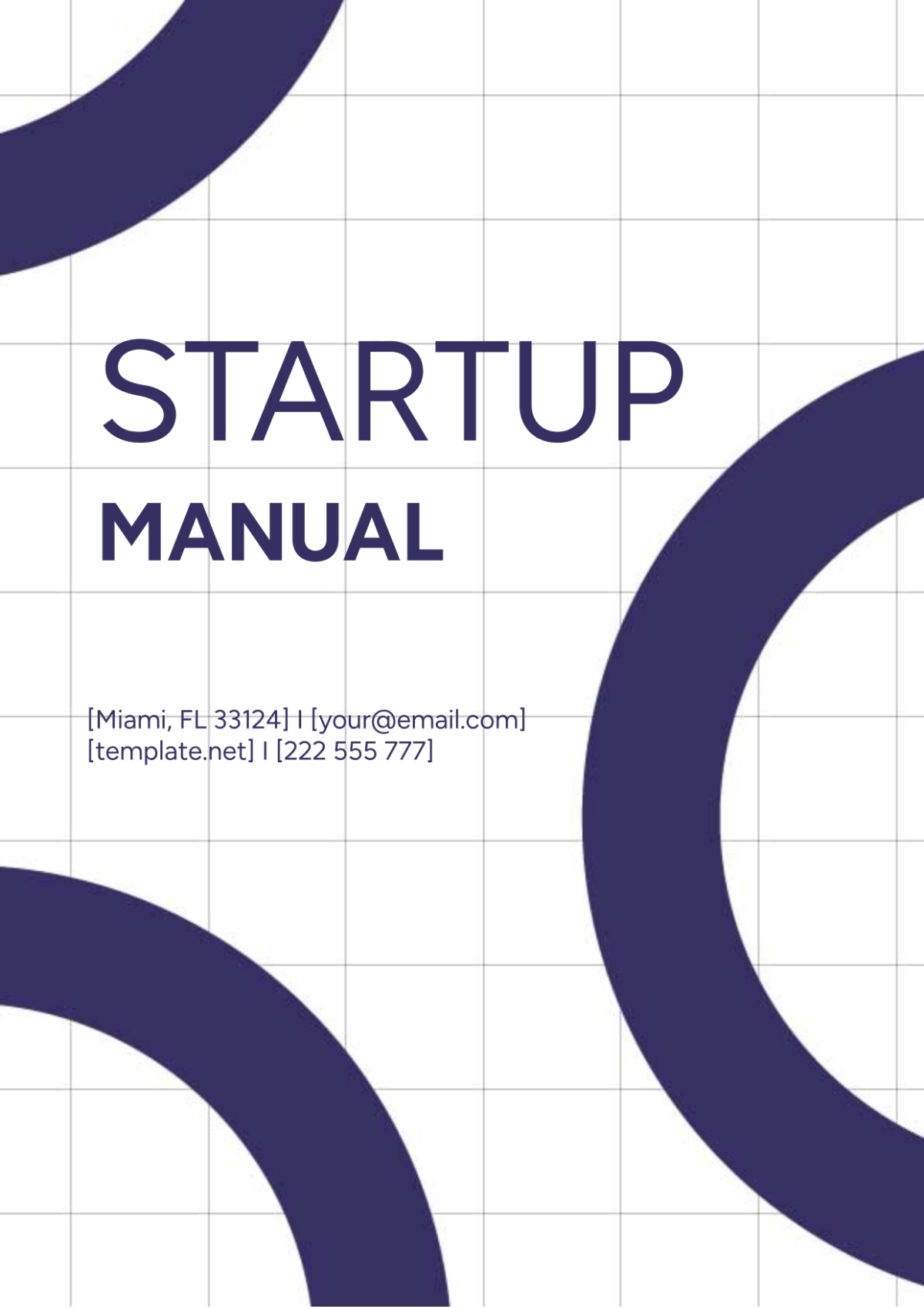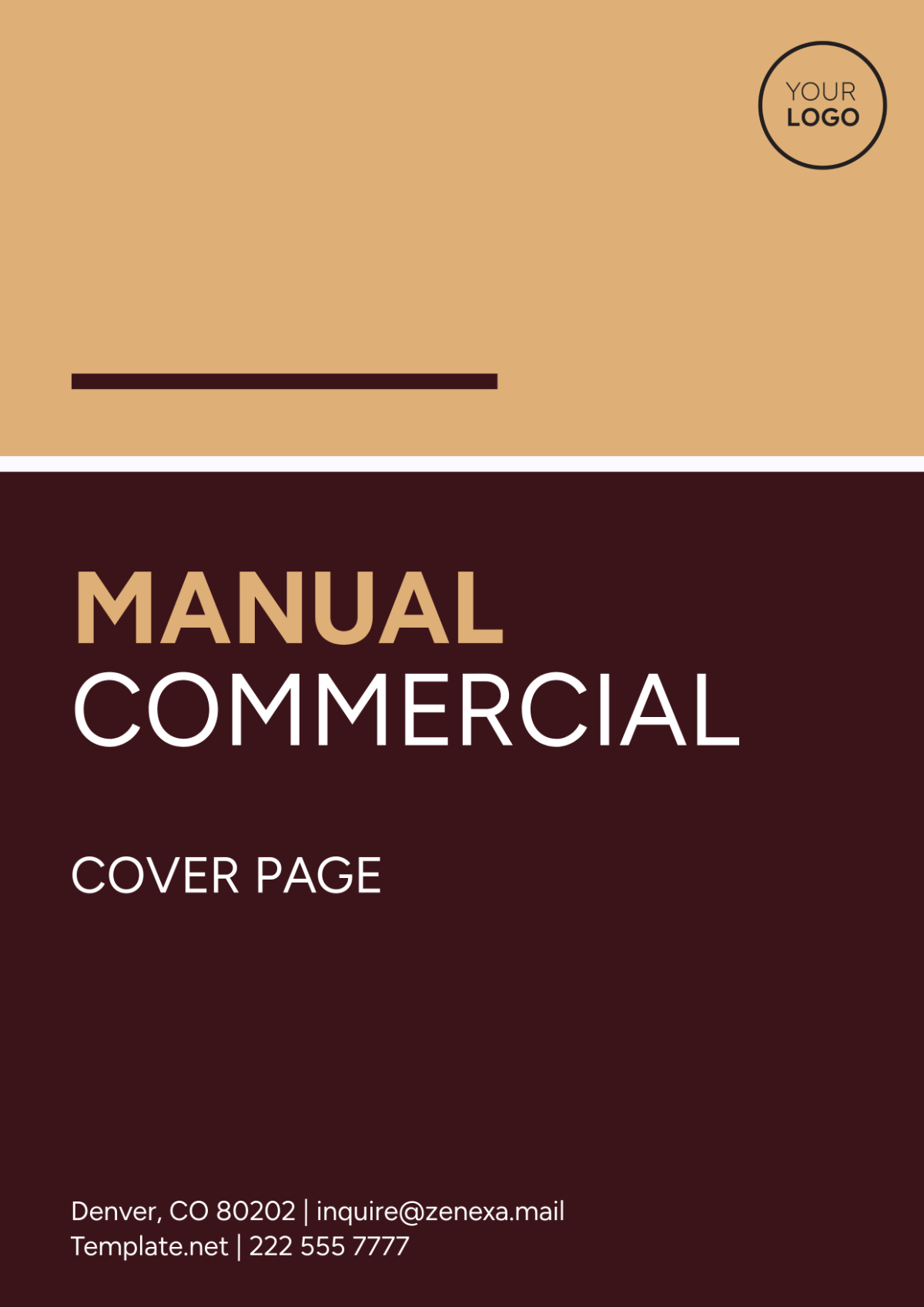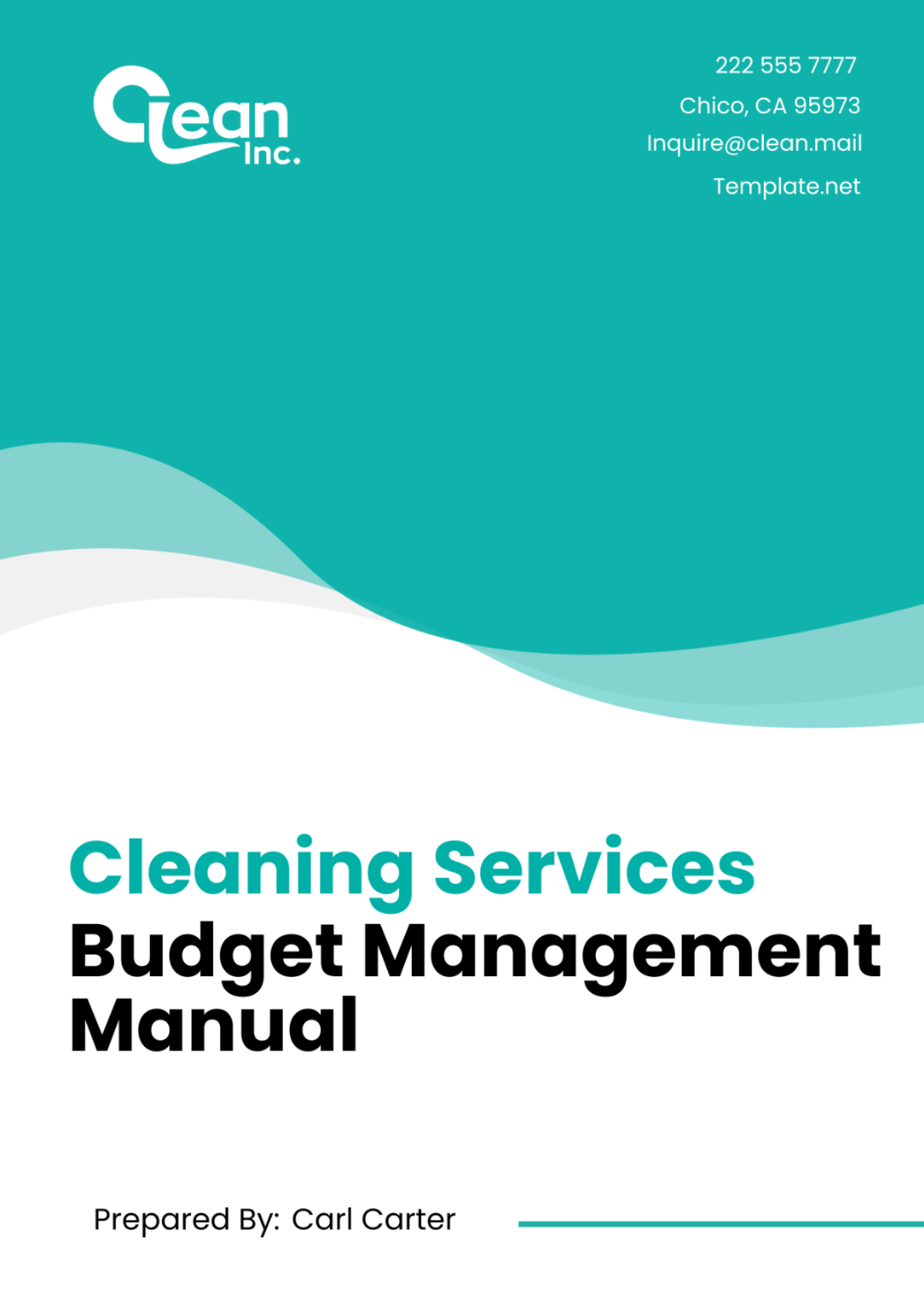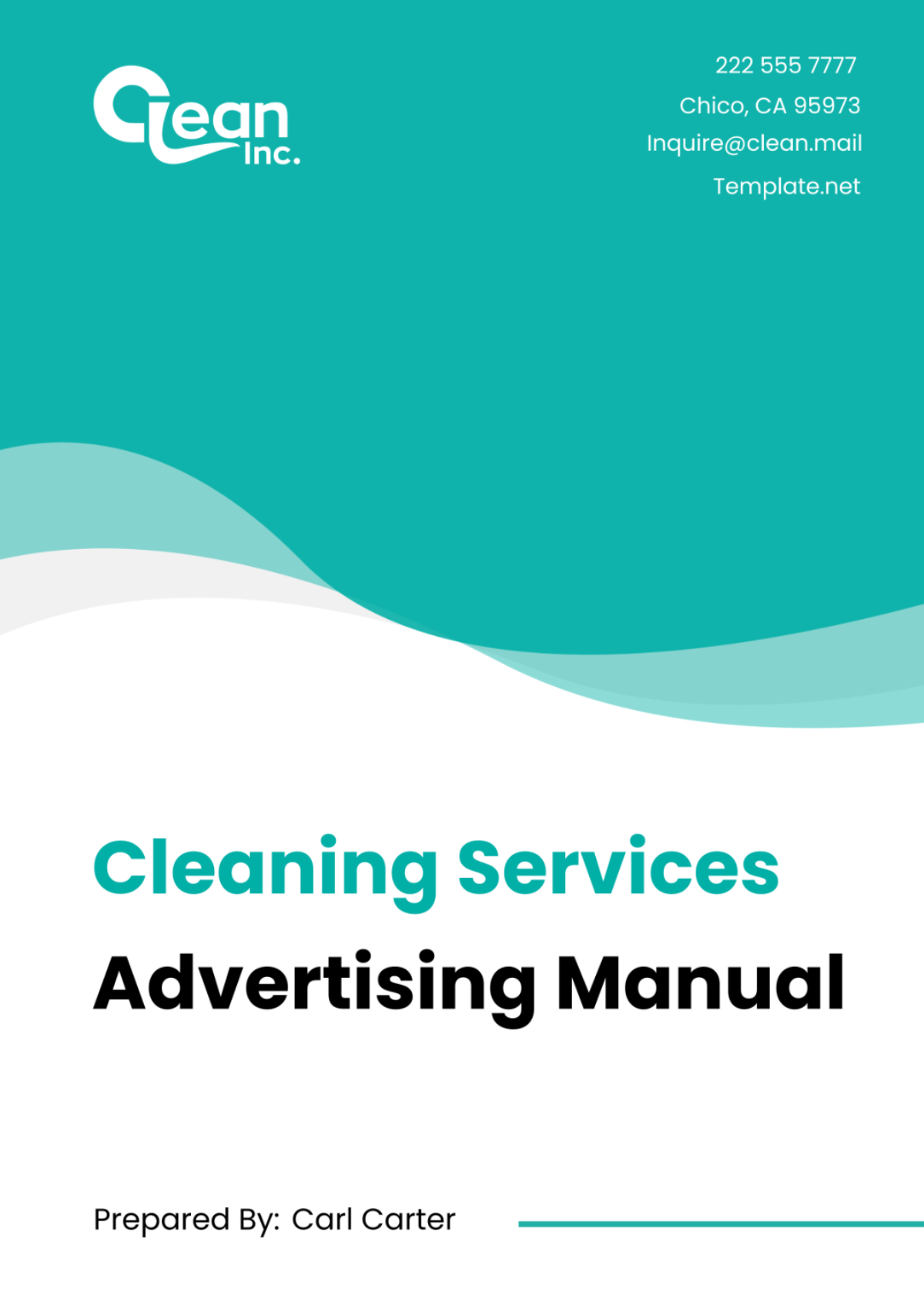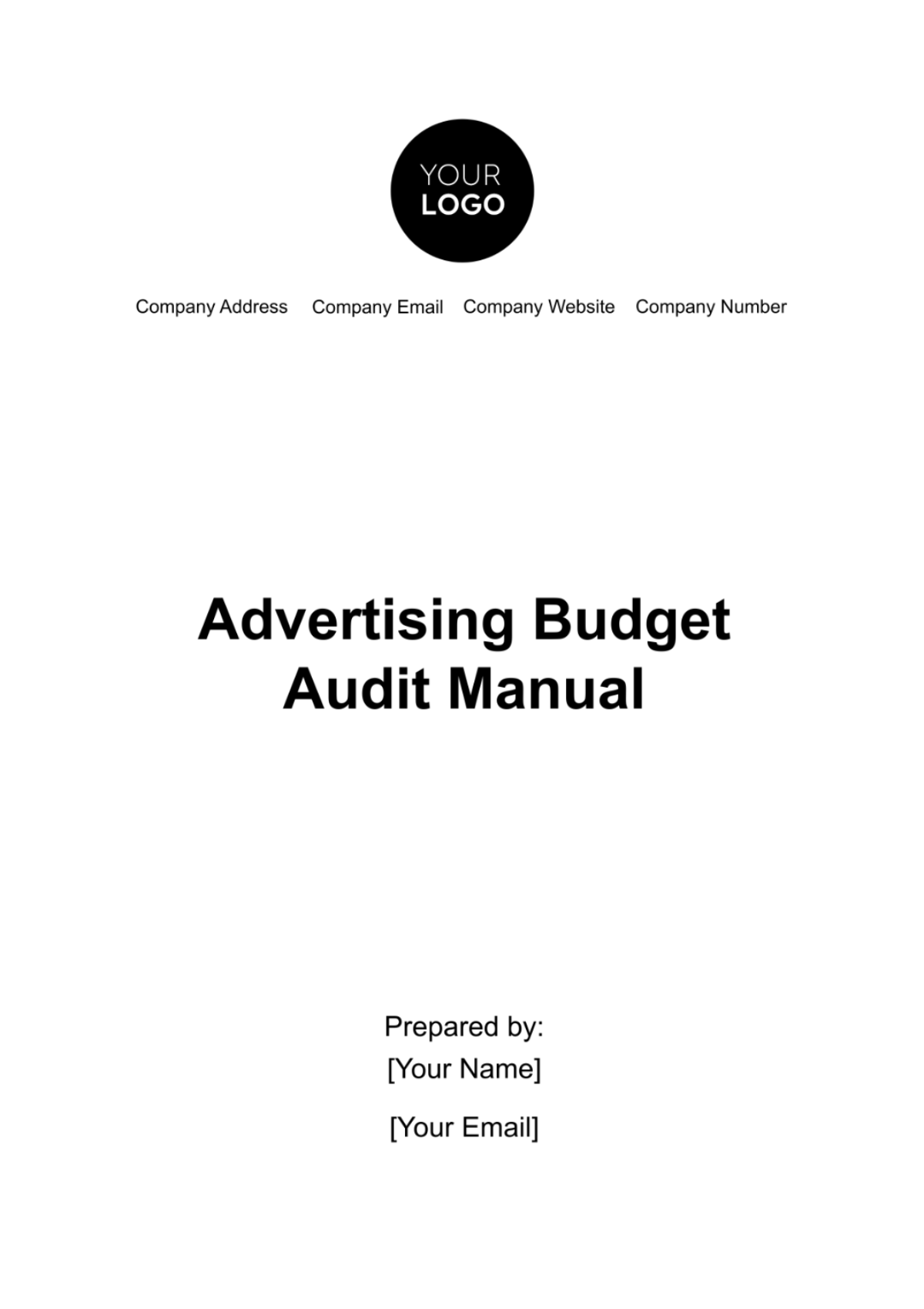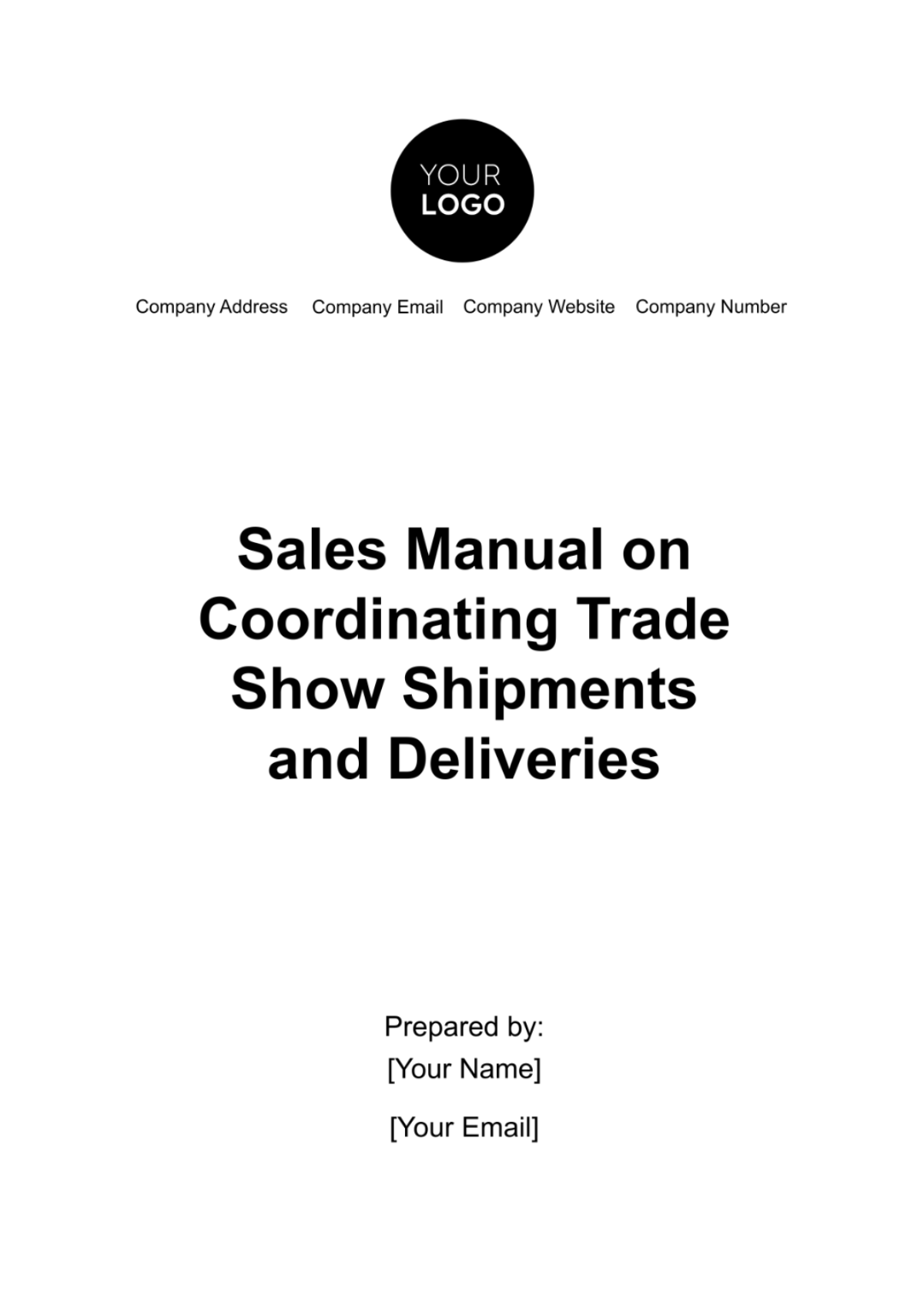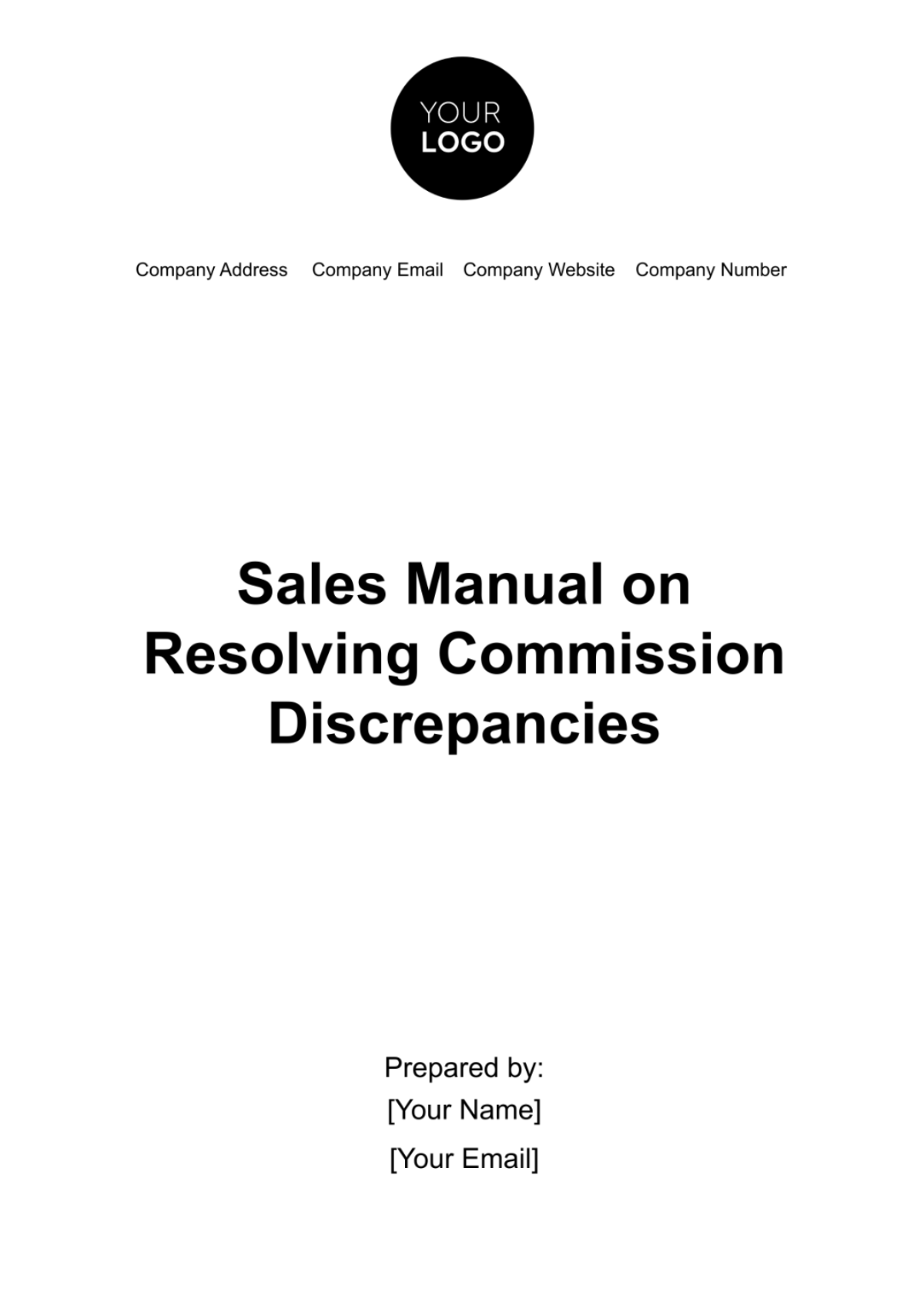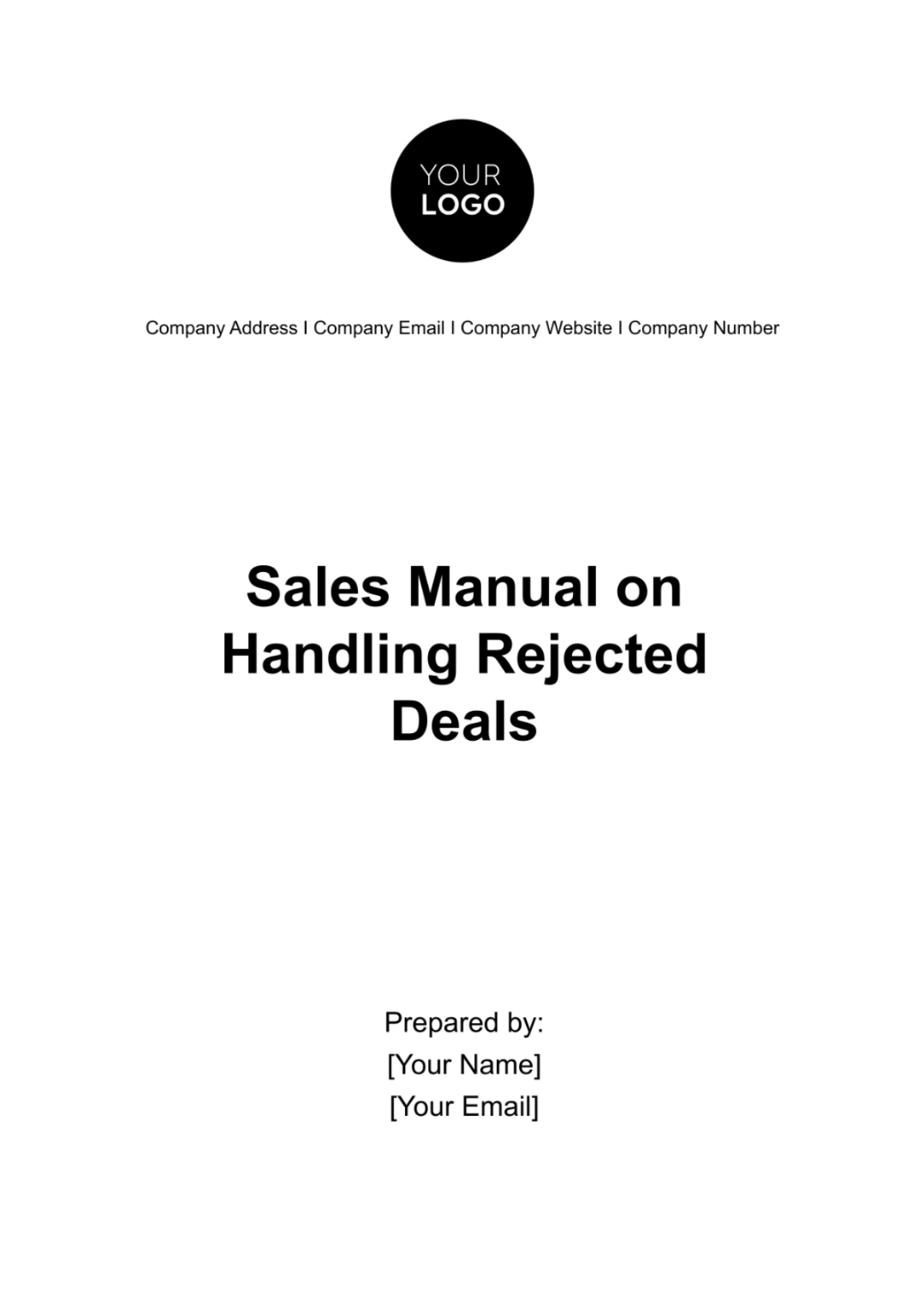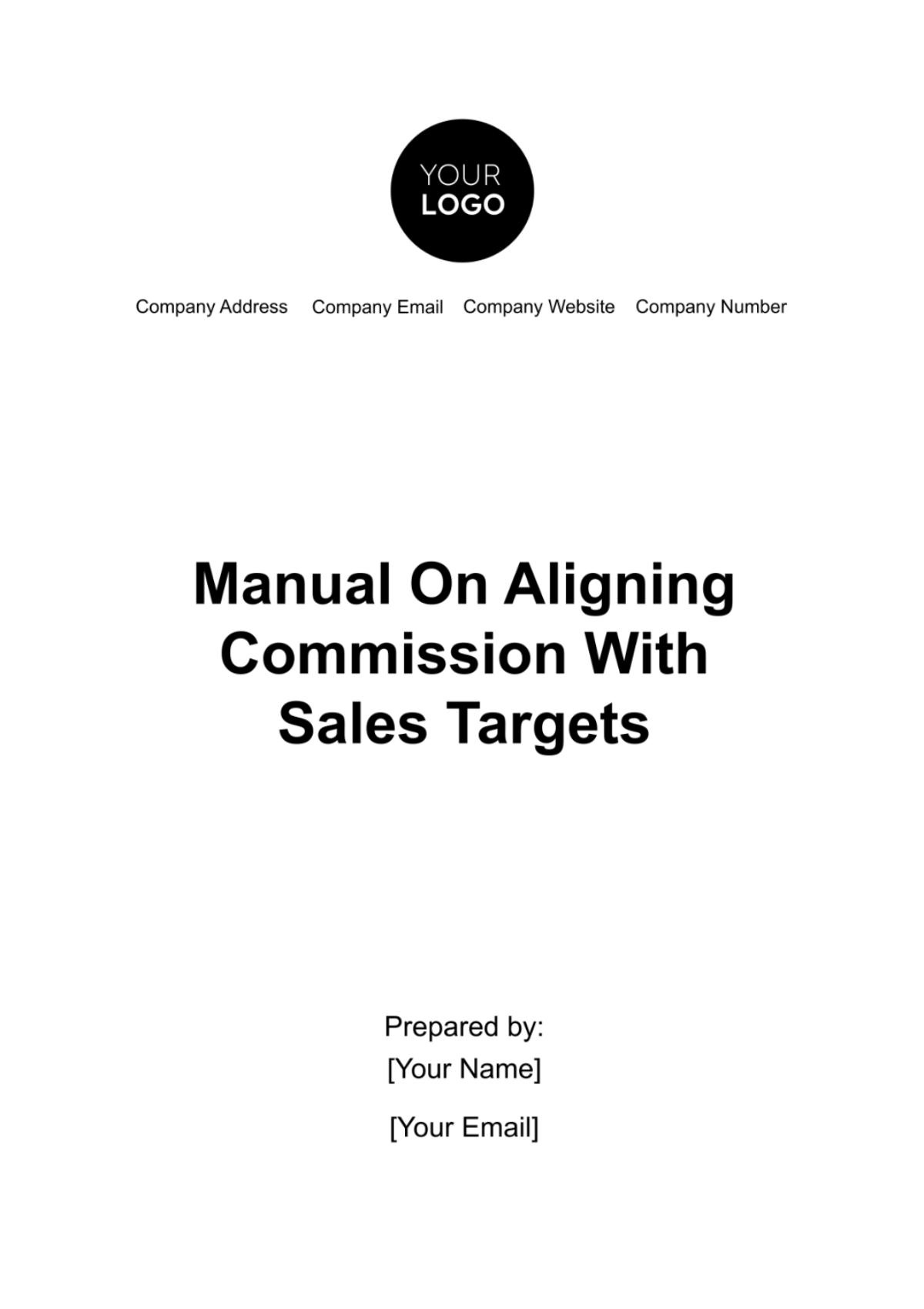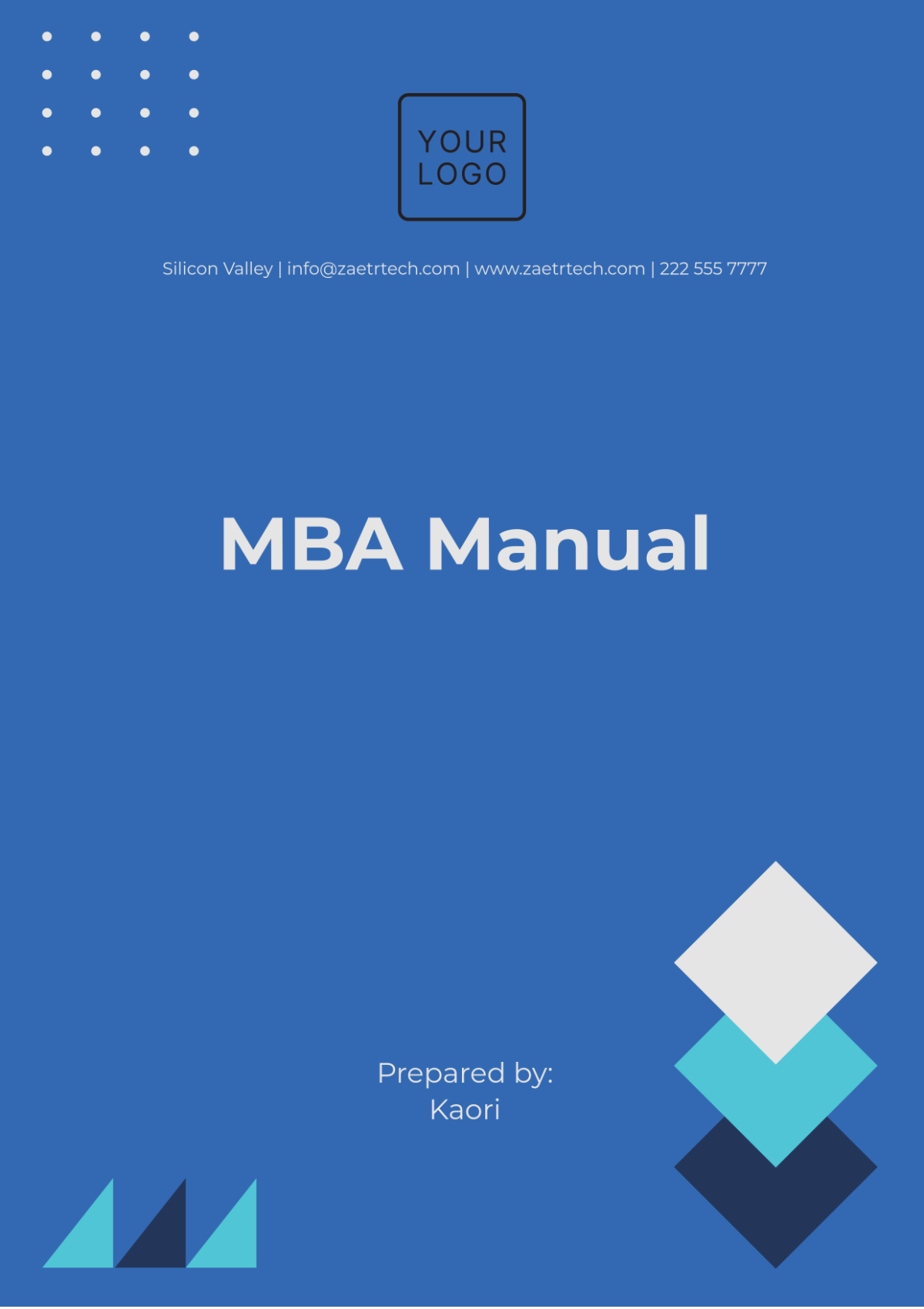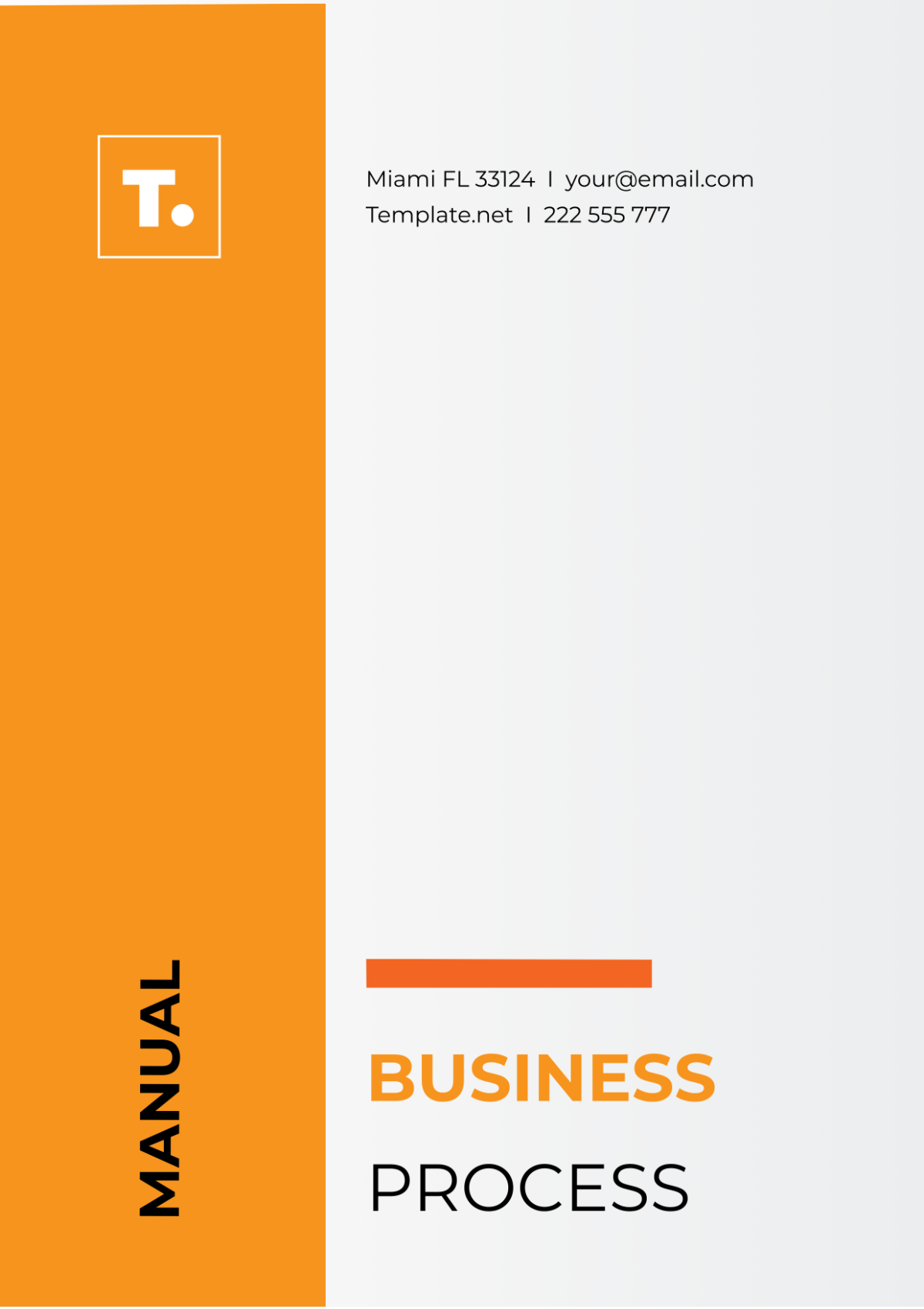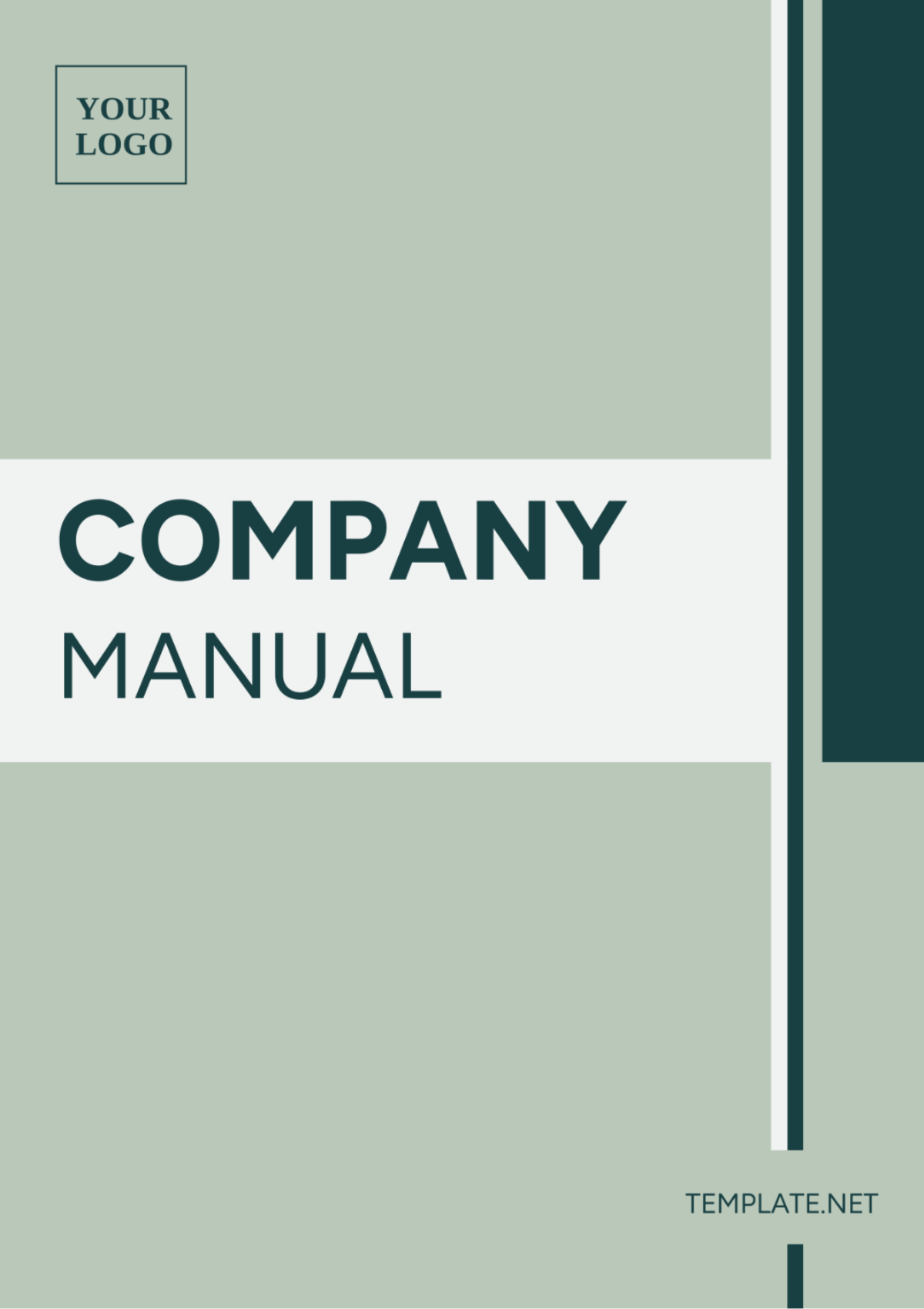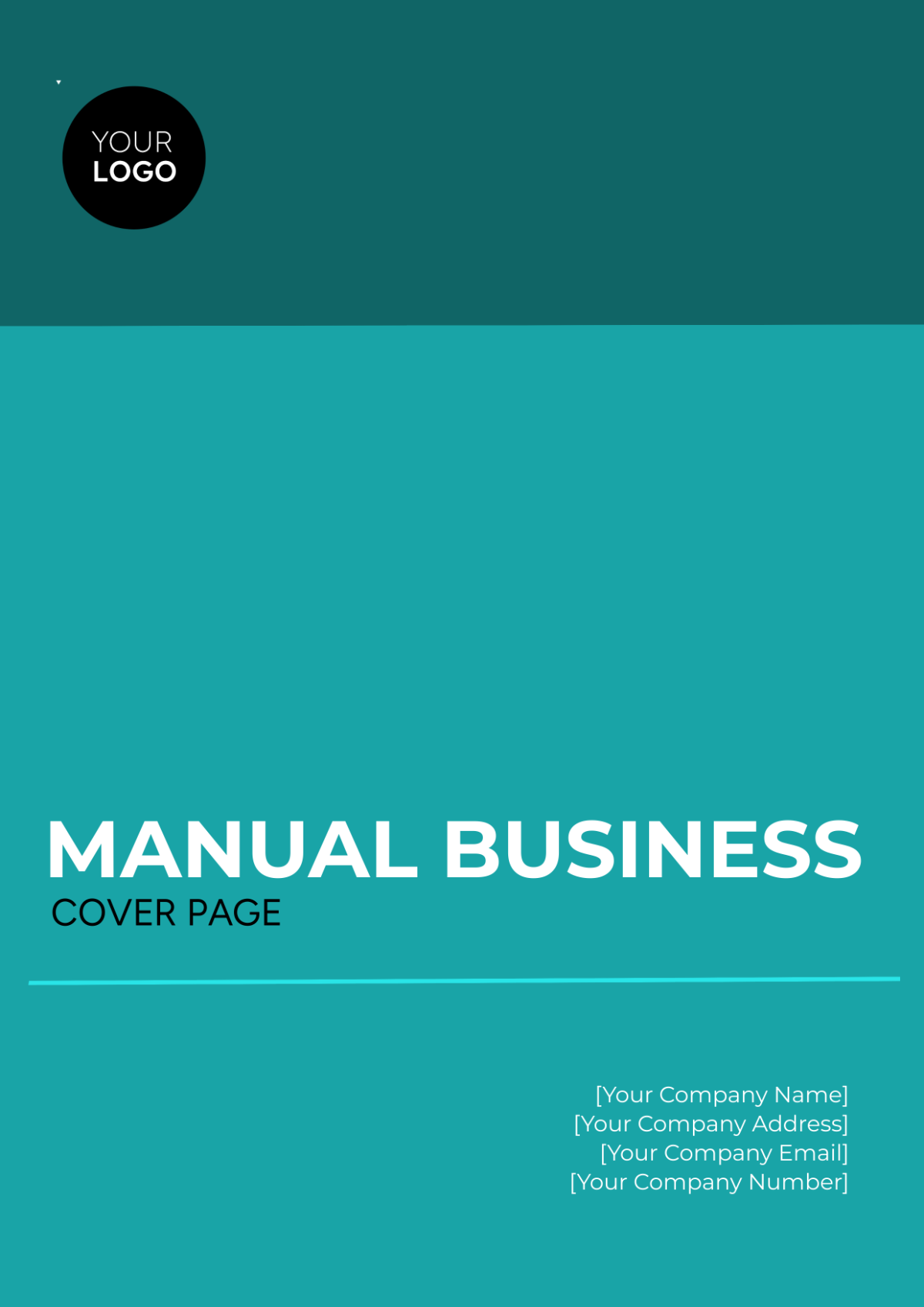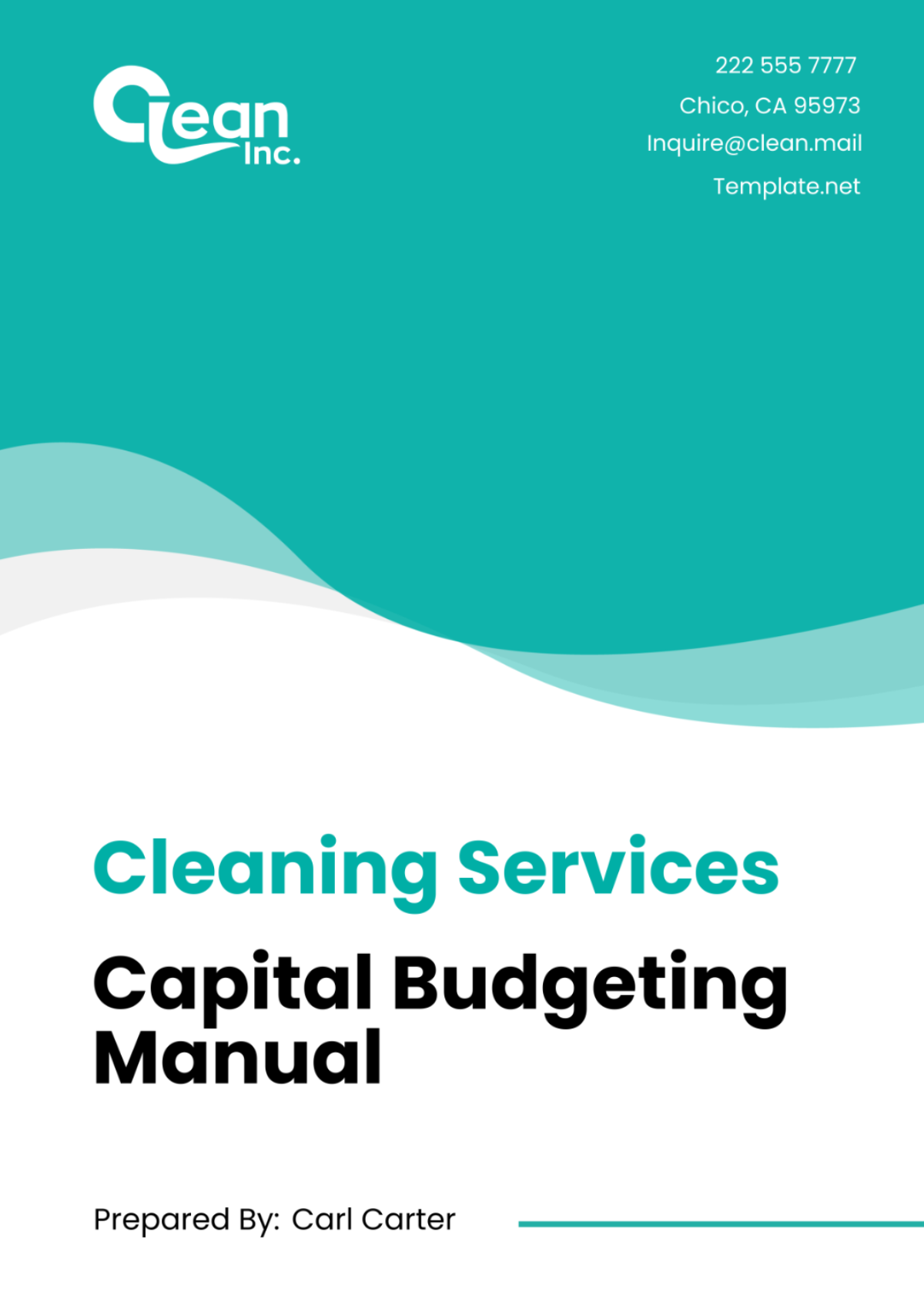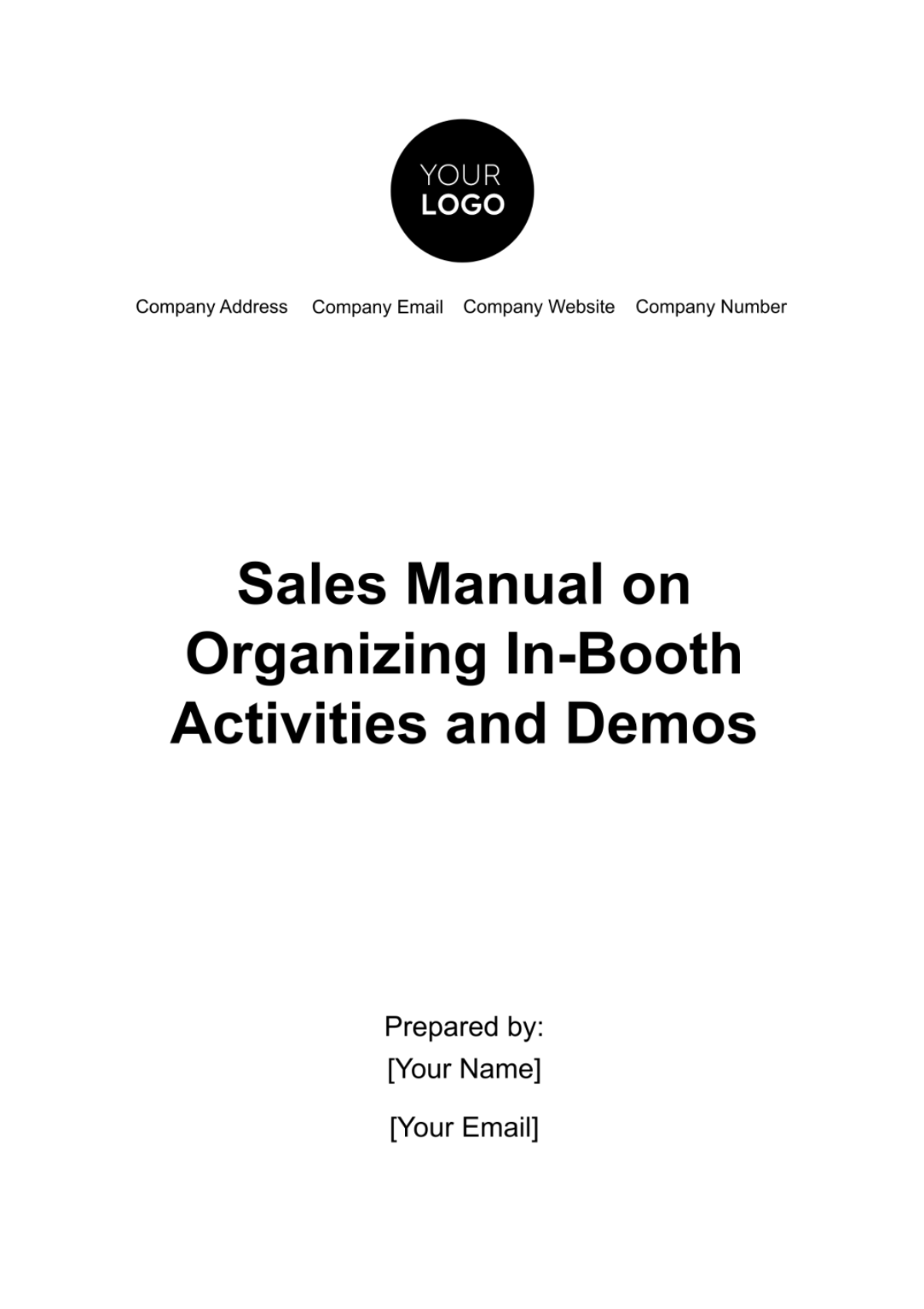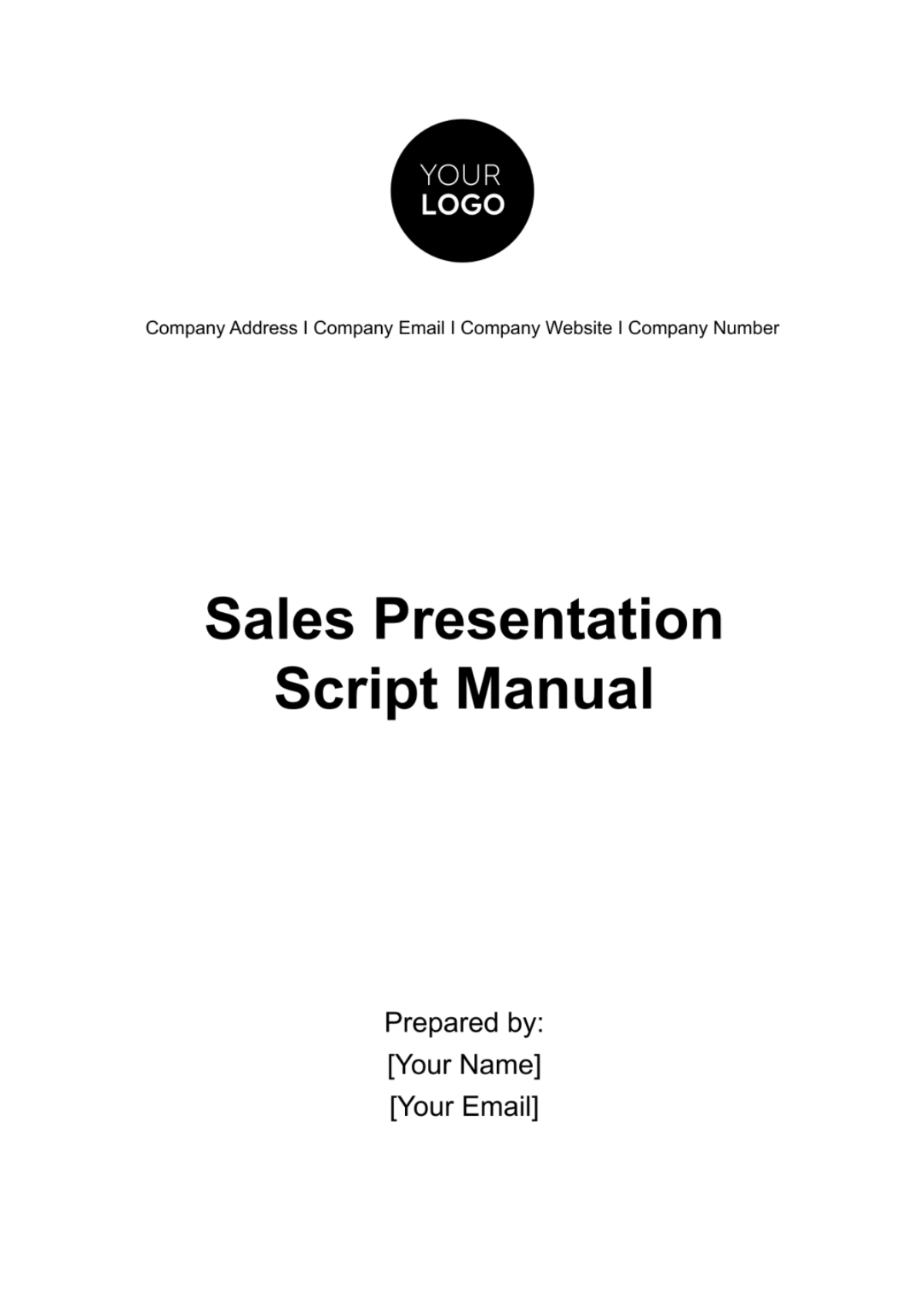Free Sales Manual for Handling Customer Complaints Template
Sales Manual for Handling Customer Complaints
Introduction
Handling customer complaints is a critical aspect of ensuring customer satisfaction and maintaining a positive brand image. As the [Sales Operations Manager], it is your responsibility to develop and oversee an effective process for managing and resolving customer complaints.
Understanding Customer Complaints
Customer complaints manifest in several distinct categories, each necessitating a customized strategy for effective resolution:
Quality of Product or Service: This category encompasses grievances related to the quality, efficacy, or functionality of a product or service. Customers may report dissatisfaction due to products failing to meet advertised standards or services not delivering the expected outcomes.
Shipping and Delivery Concerns: Issues within this category pertain to the logistics of product delivery. Complaints often involve delayed shipments, damaged items upon receipt, or instances where goods are lost in transit, causing inconvenience and dissatisfaction among consumers.
Billing and Payment Discrepancies: This type involves grievances about financial transactions. Customers may encounter inaccuracies in charges, errors in billing statements, disputes regarding payments, or issues concerning subscription services, prompting the need for prompt and transparent resolution.
Customer Service Interactions: Complaints in this category relate to the quality of support and interaction provided by customer service representatives. Issues may include perceived rudeness, provision of incorrect information, or a lack of responsiveness, all of which can significantly impact the customer's perception of the company.
Warranty and Return Issues: This category covers concerns related to the after-sales support, including warranties, returns, and exchanges, along with the policies governing these processes. Customers express dissatisfaction when the process is cumbersome, unclear, or seems unfair, highlighting the importance of clear communication and customer-friendly policies.
Addressing these categories of customer complaints with understanding and tailored strategies is crucial for maintaining trust, ensuring satisfaction, and fostering loyalty among consumers.
Importance of Addressing Complaints
Effectively addressing customer complaints is essential for several reasons:
Maintaining Customer Loyalty: Resolving complaints promptly can help retain customer loyalty, as customers appreciate responsive service.
Identifying Improvement Opportunities: Complaints often highlight areas in the business that need improvement, making them a valuable source of feedback.
Preventing Negative Word-of-Mouth: Satisfied customers are less likely to share negative feedback about their experiences with your company.
Establishing a Complaints Handling Process
Designating Responsibility
To ensure the efficient management of customer complaints, clear responsibilities should be assigned:
Complaints Manager or Team: Appoint a dedicated manager or team responsible for overseeing and coordinating the complaints handling process.
Customer Service Team: Provide specialized training to your customer service team to ensure they possess the skills necessary to address complaints effectively.
Recording Complaints
Efficiently recording and tracking complaints is essential for effective management:
Utilize a CRM System: Implement a Customer Relationship Management (CRM) system to record and track customer complaints, ensuring a centralized repository of information.
Document All Interactions: Ensure that all customer interactions, whether through phone calls, emails, or in-person discussions, are documented accurately and comprehensively.
Classifying Complaints
Implementing a structured approach to classify complaints by type and severity enables efficient prioritization and resource allocation:
Type of Complaint: Categorizing complaints into specific categories enhances organizational efficiency and simplifies the analysis process. This classification allows for targeted strategies to address the issues effectively.
Category
Description
Quality of Product/Service
Concerns related to product performance, functionality, or service efficacy.
Shipping and Delivery
Issues involving delayed, damaged, or lost shipments.
Billing and Payment
Discrepancies in charges, billing errors, or payment disputes.
Customer Service Interaction
Feedback on customer service experiences, including any negative interactions.
Warranty and Returns
Issues related to product warranties, returns, exchanges, and related policies.
Severity Assessment: Evaluating the impact of each complaint on the customer enables prioritization. Complaints are classified based on their severity to ensure that more critical issues are addressed with urgency.
Severity Level
Criteria
High
Complaints that significantly impact the customer experience or involve potential legal or safety issues.
Medium
Issues that cause inconvenience or dissatisfaction but are not immediately critical.
Low
Minor complaints that have a negligible impact on the overall customer experience.
Severity Level
Action Priority
High
Immediate attention to resolve within [24-48 hours].
Medium
Resolution targeted within [3-5 business days].
Low
Resolution within [7-10 business days] or in the next update cycle.
This structured classification system ensures that customer complaints are handled efficiently, with an emphasis on prioritizing and addressing the most severe issues promptly to maintain high levels of customer satisfaction and loyalty.
Analyzing Customer Complaints
Effective complaint resolution necessitates a meticulous approach to identifying and addressing the fundamental issues that lead to customer dissatisfaction:
Identifying Root Causes
To resolve complaints effectively, you must dig deeper and identify the underlying issues:
In-depth Investigation: Initiate a comprehensive analysis of the complaints by examining all available data, including customer feedback, product performance reports, and service delivery logs. Engaging in detailed discussions with relevant personnel can also shed light on the issue.
Cross-functional Collaboration: Forge partnerships with pertinent departments—be it production, logistics, billing, or customer service—to ensure a holistic approach to problem-solving. This collaboration is essential for diagnosing and rectifying the underlying causes of complaints, thereby enhancing product quality and service delivery.
Tracking Trends
Identifying recurring issues and patterns in complaints is crucial to prevent their recurrence:
Identification of Recurring Complaints: Maintain vigilant oversight over customer feedback to pinpoint recurring complaints. Such patterns signify underlying systemic issues that require comprehensive solutions to mitigate future occurrences.
Pattern Analysis for Strategic Insights: Employ analytical tools to scrutinize complaint data, aiming to discern patterns that may indicate broader operational challenges. This analysis could reveal seasonal trends, product-specific issues, or service areas needing improvement, guiding strategic interventions to enhance customer satisfaction.
By adopting a structured approach to analyzing customer complaints, organizations can not only address current issues more effectively but also implement preventative measures to reduce the incidence of future complaints. This proactive stance towards complaint resolution underscores a commitment to continuous improvement and customer satisfaction.
Resolving Customer Complaints
For successful complaint resolution, define clear objectives and response timeframes:
Define Objectives: Clearly outline what constitutes a successful resolution for different types of complaints, allowing your team to aim for specific outcomes.
Response Timeframes: Establish response timeframes for acknowledging and resolving complaints based on their type and severity, with more critical issues requiring faster resolution.
Communication with the Customer: Effective communication with the customer is paramount to resolving complaints and retaining their loyalty:
Prompt Acknowledgment: Acknowledge the complaint promptly, ensuring that the customer feels heard and valued.
Regular Updates: Provide the customer with regular updates on the progress of their complaint resolution, maintaining transparency and managing their expectations.
Offer Solutions: When appropriate, offer compensation, solutions, or alternatives to address the issue, aiming to satisfy the customer and rebuild trust.
Escalation Procedures: For cases where complaints cannot be resolved at the initial level, well-defined escalation procedures are crucial:
Define Escalation Levels: Create a clear process for escalating unresolved complaints, specifying the individuals or teams responsible at each level of escalation.
Timely Escalation: Ensure that unresolved complaints are escalated promptly to prevent further customer dissatisfaction, and track escalations to ensure accountability.
Preventing Future Complaints
Proactively identifying areas for improvement is vital for long-term customer satisfaction:
Collaboration with Departments: Collaborate with relevant departments to address root causes and implement process enhancements based on feedback and analysis.
Continuous Improvement: Foster a culture of continuous improvement within the organization by implementing feedback-driven changes and optimizing processes.
Training and Development Invest in staff training and development to prevent recurring complaints and enhance customer service:
Identify Training Needs: Identify areas where staff may require additional training to better serve customers and prevent complaints.
Customer-Centric Culture: Cultivate a customer-centric culture where all employees are committed to delivering excellent customer service and continuously improving the customer experience.
Feedback Loops: Establish mechanisms for gathering feedback from customers to adapt to their evolving needs:
Feedback Collection: Create channels for customers to provide feedback, such as surveys, reviews, or direct communication, allowing you to gain insights into their expectations and experiences.
Continuous Monitoring: Continuously monitor and adapt to changing customer preferences and needs, adjusting your processes and services accordingly to maintain a high level of satisfaction.
Monitoring and Reporting
Establishing Key Metrics
Define key performance indicators (KPIs) to evaluate the effectiveness of your complaints handling process:
Resolution Time: Measure the time taken to resolve complaints, aiming for swift and efficient resolution.
Customer Satisfaction Scores: Collect and analyze customer feedback through surveys or other means to gauge overall satisfaction levels.
Complaint Recurrence Rates: Track how frequently the same issues reappear, helping you identify persistent problem areas.
Regular Reporting: Generate and disseminate regular reports to keep all stakeholders informed and drive continuous improvement:
Report Generation: Establish a reporting schedule to ensure that reports are generated at predefined intervals, summarizing complaint data, trends, and resolution statistics.
Data Review and Action: Collaborate with relevant teams, including customer service, production, and other relevant departments, to review the data, discuss insights, and take action to improve the complaints handling process.
Conclusion
Effectively handling customer complaints is pivotal to maintaining customer satisfaction, fostering loyalty, and contributing to business growth. By adhering to the guidelines and best practices outlined in this comprehensive manual, you can make a significant positive impact on the company's reputation and customer relationships.


